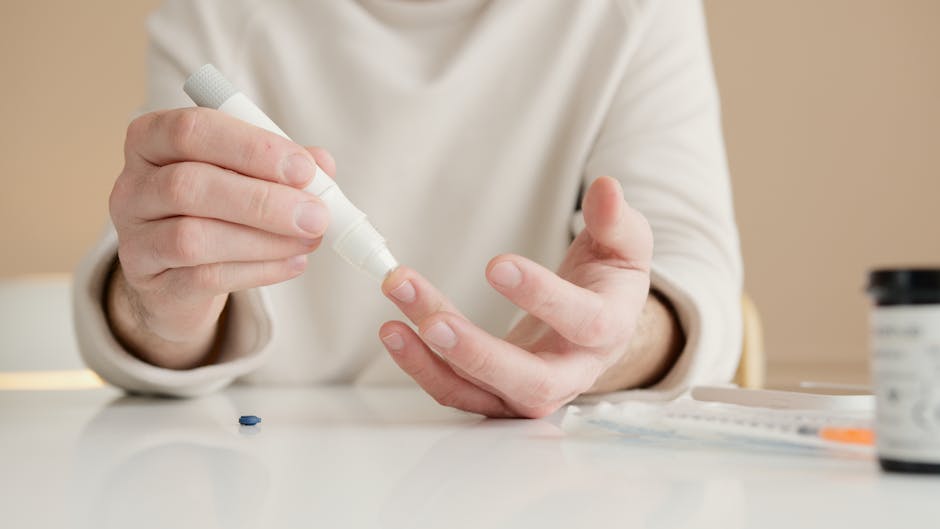Understanding the Digital Rectal Exam (DRE)
A Digital Rectal Exam (DRE) is a common procedure used by healthcare professionals to examine the rectum and surrounding areas. It involves the insertion of a lubricated, gloved finger into the rectum to assess the size, shape, and consistency of the prostate gland in men, and to evaluate the rectum and lower bowel in both men and women. While the thought of a DRE might be unsettling, understanding the procedure and its purpose can ease anxieties.
Why is a DRE Performed?
DREs are performed for a variety of reasons, primarily as a screening tool for several conditions. In men, the primary reason is to screen for prostate cancer. The prostate gland is easily palpable through the rectal wall, allowing the doctor to detect any abnormalities such as nodules, enlargement, or changes in texture that may indicate cancerous or other benign growths. However, it’s crucial to understand that a DRE alone cannot diagnose prostate cancer; it’s often used in conjunction with other tests like a Prostate-Specific Antigen (PSA) blood test.
In both men and women, a DRE can help detect:
- Rectal cancer or polyps
- Hemorrhoids
- Abdominal masses or tumors that extend into the rectum
- Inflammatory bowel disease (IBD)
- Anal fissures
- Prostatitis (inflammation of the prostate gland)
- Benign prostatic hyperplasia (BPH) – enlarged prostate
A DRE may also be part of a comprehensive physical exam, particularly for older men or individuals with a family history of prostate cancer or other relevant conditions.
The Procedure: What to Expect
The DRE is a relatively quick procedure typically lasting only a few minutes. The steps involved usually are:
- Preparation: You will be asked to undress from the waist down and lie on your side with your knees drawn up towards your chest (left lateral decubitus position). Alternatively, you may be asked to bend over a table.
- Lubrication: The doctor will lubricate a gloved finger with a water-based lubricant to ensure a comfortable and less invasive examination.
- Insertion: The doctor will gently insert a lubricated finger into the rectum. This may feel slightly uncomfortable or mildly painful but shouldn’t be severely so. Any significant pain should be communicated immediately.
- Palpation: The doctor will palpate (feel) the rectal wall and the prostate gland (in men) to assess for any abnormalities such as lumps, tenderness, or changes in size or texture.
- Completion: Once the examination is complete, the doctor will withdraw their finger. You can then dress and discuss the results with the doctor.
Discomfort and Pain Management
While most individuals experience minimal discomfort, some may feel slight pressure or cramping during the procedure. The use of lubricant significantly reduces friction and discomfort. If you experience any significant pain or discomfort, inform your doctor immediately. The doctor can adjust their technique or stop the procedure if necessary.
Interpreting the Results
The results of a DRE are often immediately discussed with the patient. The doctor will describe any findings, such as the size and consistency of the prostate, the presence of any masses or nodules, and the overall tone of the rectal tissue. Normal results usually indicate no immediate cause for concern. However, abnormal findings may warrant further investigations, such as biopsies or other diagnostic tests to determine the underlying cause.
What if the DRE is Abnormal?
An abnormal DRE doesn’t automatically mean cancer. Many conditions can cause abnormal findings. Further testing is often required to clarify the results. This might include:
- Biopsy: A small tissue sample is removed for microscopic examination.
- Colonoscopy: A scope is used to examine the entire colon and rectum.
- Ultrasound: Sound waves create images of internal organs and structures.
- PSA test (for men): Measures the level of prostate-specific antigen in the blood.
Alternatives to DRE
While the DRE is a valuable diagnostic tool, alternative methods exist, especially for prostate cancer screening. These include:
- PSA blood test: Measures the level of prostate-specific antigen in the blood. Elevated levels can suggest prostate problems but are not definitive for cancer.
- MRI (Magnetic Resonance Imaging): A non-invasive imaging technique that provides detailed images of the prostate and surrounding areas.
- Transrectal ultrasound (TRUS): A procedure that uses sound waves to create images of the prostate, often guided by a DRE for localization.
The choice of screening method often depends on various factors, including age, risk factors, and patient preference. Discussion with a healthcare provider is crucial to determine the most appropriate approach.
Addressing Patient Concerns and Anxiety
Many patients experience anxiety about undergoing a DRE. It’s a personal and intimate examination, and this understandably leads to nervousness. Open communication with your doctor is crucial. Discuss your concerns, ask questions, and express any anxieties you may have. The doctor can help allay fears by explaining the procedure thoroughly and answering your questions. Remember, the doctor has performed this procedure many times before and is focused on your comfort and well-being.
Conclusion
The Digital Rectal Exam is a vital part of routine health checks, particularly for men. While it may cause some apprehension, it is a quick, relatively painless procedure that plays a critical role in early detection of several conditions, including prostate cancer and other rectal problems. Open communication with your healthcare provider will help ensure a comfortable experience and enable you to make informed decisions about your health.
Always remember to consult with your doctor or healthcare professional to discuss any concerns or questions you may have regarding the Digital Rectal Exam or any other medical procedure.

